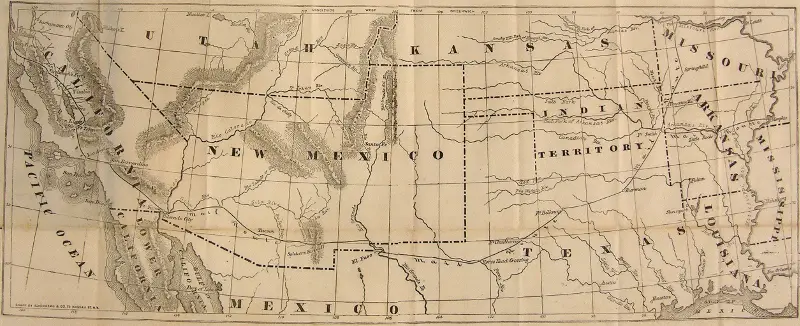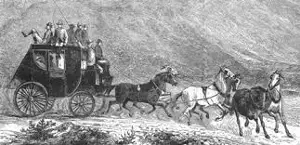The Butterfield Overland Mail Company was a short-lived mail delivery service operating in the mid-19th Century from the American Midwest to the Pacific coast. 
John Butterfield, an experienced stage company executive, was president of the company, and it was named after him. The company was in business from 1858 to 1861 and was succeeded by the Pony Express and, later, the Overland Mail Company, run by Ben Holladay and, later, Wells Fargo. Butterfield, along with surveyor Marcus Kenyon, mapped out the route and the stations along the way. Initially, a total of 139 stations dotted the route. Construction crews built a number of bridges as needed. The first mail shipment went west in September 1858. The Butterfield Trail, the route that the mail delivery service followed, ran from Tipton, Mo., to San Francisco. The trail wound through various southern states and territories, in a total of nine geographical divisions, for 2,800 miles. Specifically, the trail went through Indian Territory (which became Oklahoma later on), Texas, New Mexico, Arizona, Mexico, and California. Butterfield guaranteed that mail would be delivered in 25 days. Passengers could also book passage on a mail delivery vehicle, at fees ranging from $150 to $200, one way. Stages stopped only slightly, to change drivers, so passengers had to sleep en route. 
Butterfield had an exclusive contract with the U.S. Government to deliver the mail to and from San Francisco. In 1861, this contract included the year-old horse-to-horse mail delivery method known as the Pony Express. The first of those deliveries set out in April. At the same time, the start of the Civil War brought about the end of the Butterfield mail delivery service, with the last delivery leaving the Midwest on March 18 and arriving in San Francisco on April 13. Mail delivery in the northern part of the U.S. transferred to the Overland Mail Company; mail delivery in the Confederate states proved to be a non-starter. |
|
Social Studies for Kids
copyright 2002–2024
David White



 A large part of the territory through which the Butterfield Trail went was owned and/or populated by Native Americans. Reception from these tribes varied. Some were not at all happy with stagecoaches rumbling through, no matter what those coaches carried, and some tribesmen attacked coaches from time to time. The horses that drew the coaches and wagons were attractive targets for Native American raiders, and Butterfield sent mule-drawn vehicles through areas in which such attacks were more likely. Much of the territory surrounding the route was arid, so transports of water to stations along the route were not uncommon.
A large part of the territory through which the Butterfield Trail went was owned and/or populated by Native Americans. Reception from these tribes varied. Some were not at all happy with stagecoaches rumbling through, no matter what those coaches carried, and some tribesmen attacked coaches from time to time. The horses that drew the coaches and wagons were attractive targets for Native American raiders, and Butterfield sent mule-drawn vehicles through areas in which such attacks were more likely. Much of the territory surrounding the route was arid, so transports of water to stations along the route were not uncommon.
